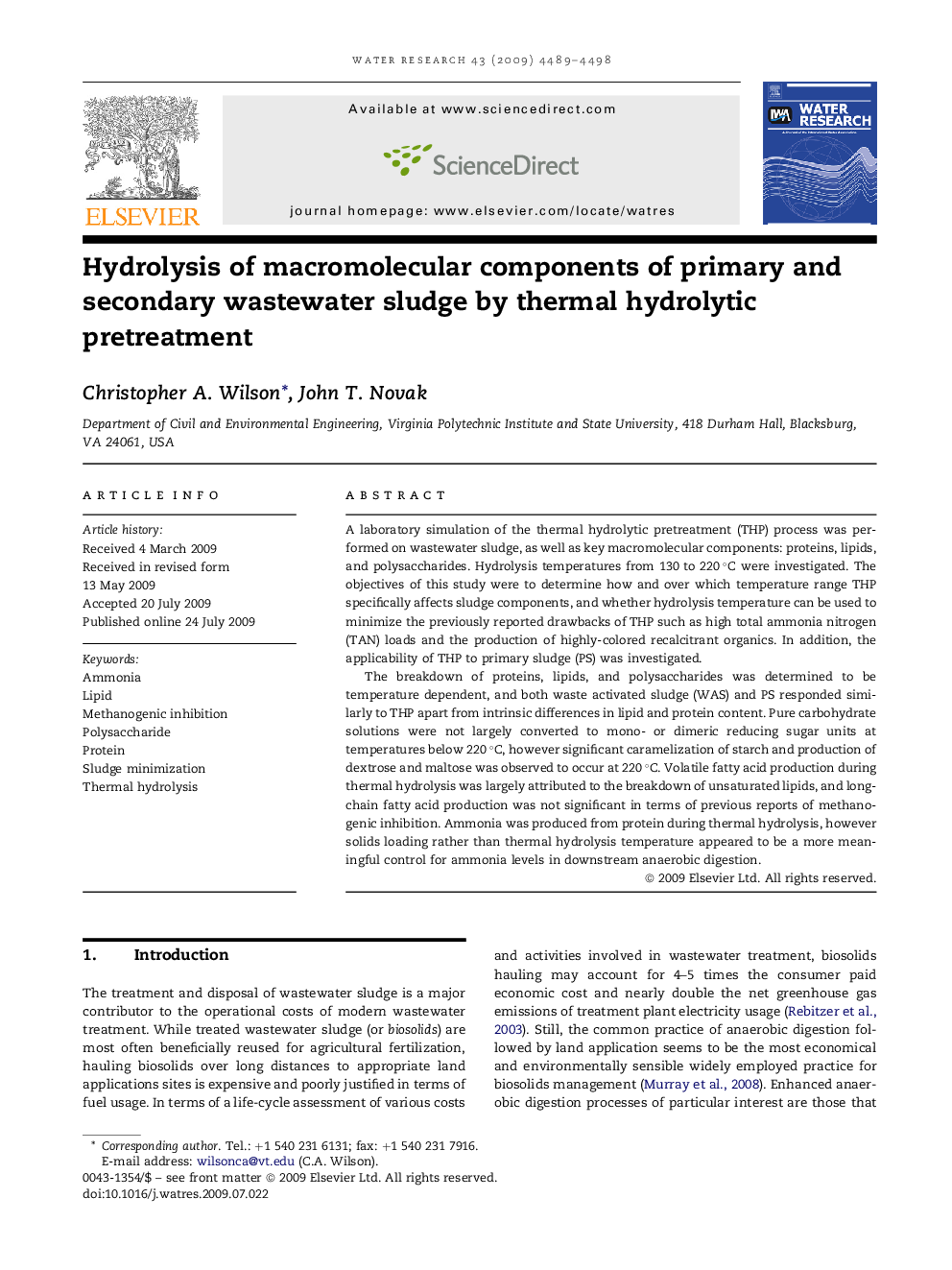| Article ID | Journal | Published Year | Pages | File Type |
|---|---|---|---|---|
| 4485499 | Water Research | 2009 | 10 Pages |
A laboratory simulation of the thermal hydrolytic pretreatment (THP) process was performed on wastewater sludge, as well as key macromolecular components: proteins, lipids, and polysaccharides. Hydrolysis temperatures from 130 to 220 °C were investigated. The objectives of this study were to determine how and over which temperature range THP specifically affects sludge components, and whether hydrolysis temperature can be used to minimize the previously reported drawbacks of THP such as high total ammonia nitrogen (TAN) loads and the production of highly-colored recalcitrant organics. In addition, the applicability of THP to primary sludge (PS) was investigated.The breakdown of proteins, lipids, and polysaccharides was determined to be temperature dependent, and both waste activated sludge (WAS) and PS responded similarly to THP apart from intrinsic differences in lipid and protein content. Pure carbohydrate solutions were not largely converted to mono- or dimeric reducing sugar units at temperatures below 220 °C, however significant caramelization of starch and production of dextrose and maltose was observed to occur at 220 °C. Volatile fatty acid production during thermal hydrolysis was largely attributed to the breakdown of unsaturated lipids, and long-chain fatty acid production was not significant in terms of previous reports of methanogenic inhibition. Ammonia was produced from protein during thermal hydrolysis, however solids loading rather than thermal hydrolysis temperature appeared to be a more meaningful control for ammonia levels in downstream anaerobic digestion.
